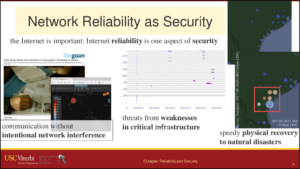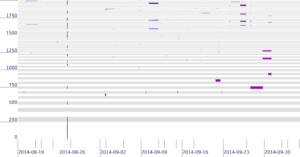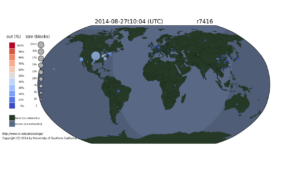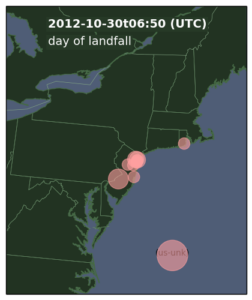We published a new paper “Visualizing Internet Measurements of Covid-19 Work-from-Home” by Erica Stutz (Swarthmore College), Yuri Pradkin, Xiao Song, and John Heidemann (USC/ISI) at the Symposium for REU Research in Data Science, Systems, and Security, co-located with IEEE BigData 2021.
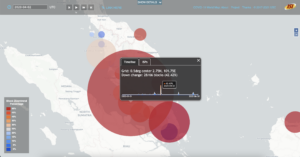
From the abstract:
The Covid-19 pandemic disrupted the world as businesses and schools shifted to work-from-home (WFH), and comprehensive maps have helped visualize how those policies changed over time and in different places. We recently developed algorithms that infer the onset of WFH based on changes in observed Internet usage. Measurements of WFH are important to evaluate how effectively policies are implemented and followed, or to confirm policies in countries with less transparent journalism.This paper describes a web-based visualization system for measurements of Covid-19-induced WFH. We build on a web-based world map, showing a geographic grid of observations about WFH. We extend typical map interaction (zoom and pan, plus animation over time) with two new forms of pop-up information that allow users to drill-down to investigate our underlying data.We use sparklines to show changes over the first 6 months of 2020 for a given location, supporting identification and navigation to hot spots. Alternatively, users can report particular networks (Internet Service Providers) that show WFH on a given day.We show that these tools help us relate our observations to news reports of Covid-19-induced changes and, in some cases, lockdowns due to other causes. Our visualization is publicly available at https://covid.ant.isi.edu, as is our underlying data.
Datasets from this work will be available from our website and can be seen now at https://covid.ant.isi.edu. We thank NSF grants 2028279 and CNS-2007106 for supporting this work.

